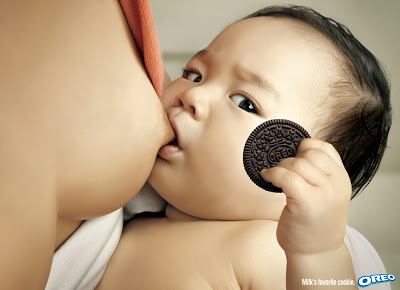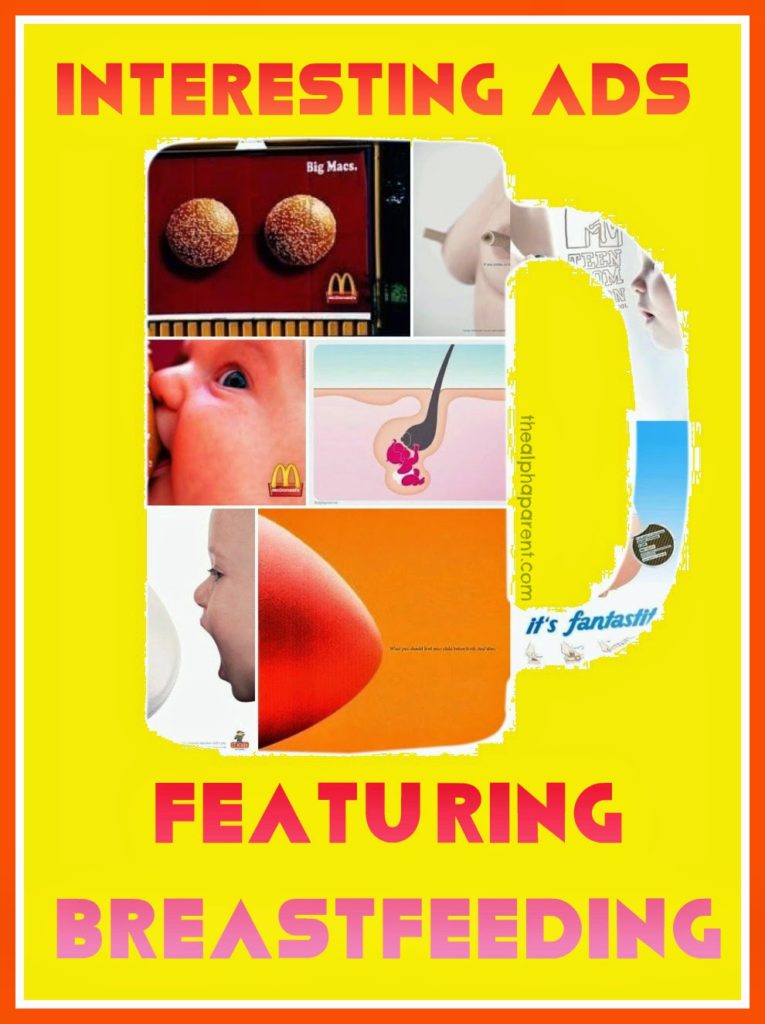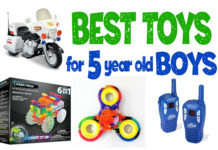Here is a fascinating collection of genuine advertisements from around the world. They all feature breastfeeding imagery yet they are not advertising breastfeeding. From cakes to hair removal cream, these ads show that breastfeeding can be used to sell an eclectic range of products and services.

Client: I.T. Kids
Product: I.T. tuition
Type of Ad: Print
Coverage: International
Target: Parents
There are a few flaws in this ad, besides the obvious point that I’ve never seen a baby try to latch onto a computer mouse. Firstly, a computer mouse looks nothing like a breast – it’s sans nipple for a start. Secondly, the ad is aimed at parents of 4 to 14 year olds yet the ad features a baby. What’s wrong with featuring a 4 year old at the breast? Nevertheless, kudos to the company for normalising breastfeeding.

Client: Bioblas
Product: Hair removal cream
Type of Ad: Print
Coverage: Turkey
Target: Women
The text on the ad reads: “No escape for hair!” The image shows a baby about to latch onto a hair follicle which resembles a breast. It may be that this ad intends to have a double meaning. The first meaning could suggest that there’s no escape for a breast when a baby is about. The second meaning presumes that babies suck the life out of breasts (this is hair removal cream we’re talking about). Other ads in this campaign feature a quant squid attacking a follicle which resembles a ship; and a teenage groupie mauling a follicle which resembles a rock star (okaaay? Whatevs). So there is certainly aggressive intent to these ads.
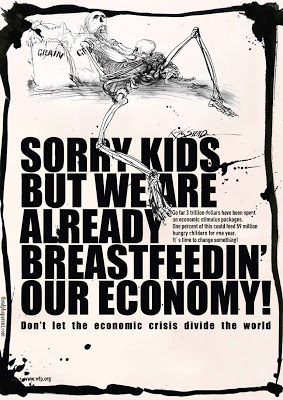
Client: United Nations
Product: UN World Food Programme
Type of Ad: Print
Coverage: Germany
Target: Adults, Unisex
Here’s another ad to feature breastfeeding as a metaphor for ‘sucking the life’ from something. The breasts on the ‘mother’ (the only piece of flesh left on her) are saggy and misshapen. Also, she looks as if she is in pain. It’s unfortunate that the ad features such imagery because the aim of the campaign is honourable: to eradicate hunger and malnutrition worldwide.

Client: National Egg Coordination Committee
Product: Eggs
Type of Ad: Print
Coverage: India
Target: Pregnant Women
The ad is pro-breastfeeding in that it symbolises a breast (using an egg) with the text: “What you should feed your child before birth. And after”. Rather than suggesting giving eggs to newborn babies, the add is recommending that mothers eat eggs whilst breastfeeding. The company has what at first appears to be a pro-breastfeeding website. Here it maintains that: “What you eat is what your baby gets. You’ll have to watch your diet closely if you are breast feeding”. This is not entirely true and places unnecessary burden on the breastfeeding mother. Research has confirmed that even if some nutrients are missing in a woman’s daily diet, she will still produce milk that will help her child grow. There is very little difference in the milk of healthy mothers and mothers who are severely malnourished. Advice on the Egg Committee website also includes the suggestion that breastfeeding mothers eat “an egg a day for essential vitamins, minerals and proteins”. Although it fails to warn that if you have a family medical history of allergy you should probably disregard this advice.

Client: Jam Bakery
Product: Mini cakes
Type of Ad: Print
Coverage: Hong Kong
Target: Universal
This ad is trying to sell mini versions of a popular brand of cakes. The text reads: “When you need a little snack”. The accompanying image shows a baby trying to latch onto a woman’s smaller breasts. Although humorous in intention the ad perpetuates the myth that breastfeeding mothers are exhibitionists. The breastfeeding mother is shown sitting publically with her shirt unbuttoned completely bearing navel, mid drift, cleavage, the works. Hardly the way nursing mothers normally breastfeed in public.

Client: Action on Smoking and Health (ASH)
Product: Smoking cessation
Type of Ad: Print
Coverage: UK
Target: Mothers
On their website ASH claim “We do not attack smokers or condemn smoking”, yet by maintaining in their ad that “If you smoke, so does your baby” how can this be interpreted any other way? I’m not condoning smoking. I believe smoking in the vicinity of children is tantamount to abuse. However this ad is misleading. My fear is that it could discourage a smoking mother from breastfeeding if she cannot combat her smoking addiction. The factual reality is that a mother who cannot stop smoking should still breastfeed. Besides providing many immunities that help babies fight illness, breastfeeding can help counteract some of the effects of cigarette smoke.

Client: MTV
Product: Teen Mom television documentary
Type of Ad: Print
Coverage: Serbia
Target: Youth 18-29
When a baby and a breast are placed together in advertising like this, the result is synonymous with breastfeeding. Here, the nipple piercing is a symbol of adolescence, the baby is a symbol of motherhood. As there is no evidence to show nipple piercing has any effect on a woman’s ability to breastfeed, I have no issues with this ad. However the use of breasts that obviously have not endured the changes evoked by pregnancy is tedious. Keep it real MTV.
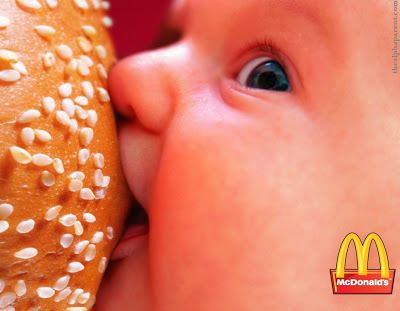
Client: McDonalds
Product: Big Macs
Type of Ad: Outdoor
Coverage: Austria and Italy
Target: Universal
Yes I’m afraid this is a genuine McDonalds ad. It has taken one of the most unhealthy forms of nutrition available – the big mac, and equated it with the healthiest form of nutrition available – breast milk. Not only is this ad a blatant insult to common sense, it’s an insult to breastfeeding mothers (McDonalds are known for their intolerance of breastfeeding, see here). This advert is a boil on the arse of life. To add further insult to injury, the campaign coincided with World Children’s Day. Another ad in the same campaign shows two big macs arranged to symbolise breasts:

Next up:

